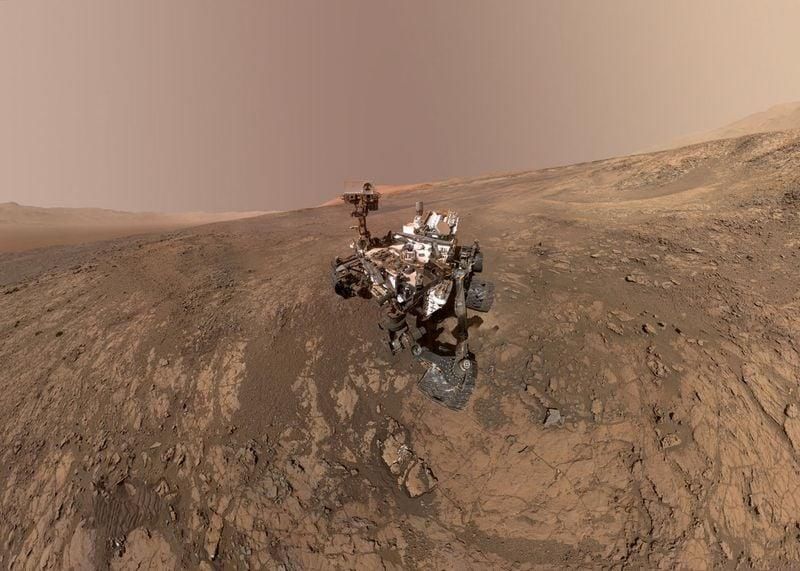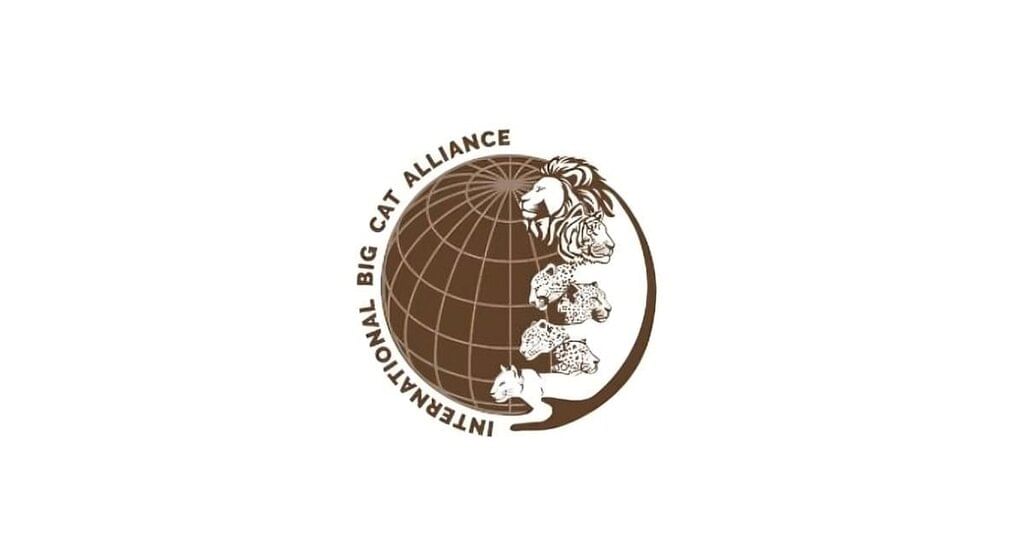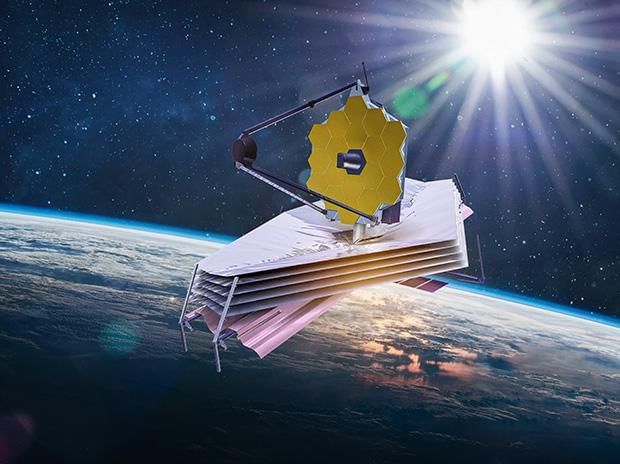UPSC Daily Current Affairs: 18th April 2025 | Current Affairs & Hindu Analysis: Daily, Weekly & Monthly PDF Download
GS3/Science and Technology
NASA’s Curiosity Rover Discovers Carbon-Bearing Minerals on Mars
 Why in News?
Why in News?
NASA's Curiosity Rover has recently made a groundbreaking discovery of carbon-bearing minerals on Mars, providing the first solid evidence of a carbon cycle existing on the Red Planet.
- The Curiosity Rover was launched on November 26, 2011, and landed on Mars on August 5, 2012.
- It is part of NASA’s Mars Science Laboratory (MSL) mission and employs a unique sky crane landing system.
- Key scientific goals include determining the potential for life on Mars and preparing for future human exploration.
- A significant finding was the identification of a carbonate mineral called siderite, marking a first for Mars.
Additional Details
- Curiosity Rover: This robotic rover is approximately 3 meters long, weighs around 900 kilograms, and operates using a thermoelectric power generator that uses the radioactive decay of plutonium.
- Scientific Goals: The rover aims to understand Mars' climate, geology, and the potential for past life, which is crucial for future exploration.
- Recent Findings: During its exploration of an 89-meter stretch of terrain in the Gale Crater, the rover drilled into rocks and discovered siderite, which contains both carbon and oxygen.
- The rocks were found to contain 5-10% siderite by weight, suggesting that a considerable amount of Mars' past CO2 may be trapped in its crust.
- Additionally, the presence of iron oxyhydroxides indicates that siderite may have dissolved in acidic water, releasing some CO2 back into the atmosphere.
- This discovery implies a limited and slow carbon cycle on Mars.
This discovery is pivotal as it enhances our understanding of Martian geology and the planet's capacity to support life in its history, paving the way for future exploratory missions.
GS3/Economy
Government’s Equity Conversion in Vodafone Idea - A Strategic Course Correction for Telecom Stability
 Why in News?
Why in News?
The Government of India has made a significant move to increase its stake in Vodafone Idea (Vi) to 49% by converting Rs 36,950 crore of delayed spectrum liabilities into equity. This decision represents a shift from uncertainty to stability, particularly for the banking sector involved with the telecom industry.
- The Indian telecom sector has faced numerous challenges, including intense competition and financial distress among operators.
- Vodafone Idea has been disproportionately impacted by legacy Adjusted Gross Revenue (AGR) dues following a Supreme Court ruling in 2019.
- The government's intervention aims to stabilize the sector by providing necessary financial relief and maintaining regulatory integrity.
Additional Details
- Recognition of sectoral distortions: The government's approach acknowledges past regulatory oversights while ensuring that regulatory frameworks remain intact.
- Financial relief and liquidity support: An expected cash flow relief of Rs 44,200 crore is projected over FY26–FY28. Additionally, Vodafone Idea raised Rs 18,000 crore through an FPO in April 2024 to enhance operational capabilities.
- The company plans to raise Rs 25,000 crore in debt in FY26, which is bolstered by increased investor confidence.
- Despite the equity conversion, operational control remains with Vodafone Group and Aditya Birla Group, ensuring management accountability and preventing perceptions of nationalization.
This strategic intervention by the government is not merely a bailout but a course correction aimed at revitalizing the telecom sector. It ensures that major players like Vodafone Idea remain solvent, thus preserving consumer access and competition within the market.
Looking ahead, Vodafone Idea must focus on executing a substantial investment in network expansion, with priorities on improving 4G coverage and initiating 5G rollout, while also working on ARPU growth and reducing customer churn.
The recovery of the telecom sector is critical as it serves as a backbone for the digital economy, which is projected to grow substantially in the coming years. The government's action sets the stage for a more resilient telecom ecosystem in India.
GS2/International Relations
International Big Cat Alliance (IBCA) Establishes Headquarters in India
 Why in News?
Why in News?
The International Big Cat Alliance (IBCA) has officially signed an agreement with the Government of India, designating India as the headquarters and secretariat for the alliance. This milestone marks a significant step in global conservation efforts for big cats.
- The IBCA was launched by Prime Minister Narendra Modi in April 2023 during the 50th anniversary of Project Tiger.
- It was formally approved by the Union Cabinet in February 2024.
- The alliance aims to conserve seven major big cat species worldwide: Tiger, Lion, Leopard, Snow Leopard, Puma, Jaguar, and Cheetah.
- India, Nicaragua, Eswatini, Somalia, and Liberia are the initial members that ratified the IBCA Framework Agreement.
Additional Details
- Membership:Membership is open to all UN Member States, including:
- Range countries: Countries where big cats naturally occur.
- Non-range countries: Countries interested in supporting global conservation initiatives for big cats.
- IBCA as a Global Legal Entity: The IBCA became a treaty-based intergovernmental organization in September 2023 after five countries ratified the framework agreement.
- Institutional Support and Funding:India has committed ₹150 crore for the period 2023–2028 to support the IBCA’s initiatives, including:
- Establishment of a corpus fund
- Infrastructure development
- Covering recurring expenses of the IBCA
This agreement and the establishment of the IBCA in India reflect a strong commitment to the conservation of big cat species globally, aiming to foster collaboration and support among nations.
GS3/Environment
Flue Gas Desulphurisation (FGD)
Why in News?
A recent study commissioned by the Principal Scientific Adviser has recommended that the Union Environment Ministry reconsider its 2015 directive requiring all 537 coal-fired power plants in India to implement Flue Gas Desulphurisation (FGD) technology.
- FGD systems are designed to remove sulphur compounds, primarily sulfur dioxide (SO2), from the exhaust emissions of fossil-fuel power stations.
- These systems can eliminate up to 95% of sulfur dioxide from flue gas using various absorbents.
- The wet process is the predominant method for FGD in large power plants, utilizing solutions like limestone or ammonia.
Additional Details
- FGD Process: The process involves spraying uncleaned flue gas in a scrubber tower with a mixture of water and limestone (scrubbing slurry), where a chemical reaction occurs to bond most of the sulfur dioxide.
- Importance of FGD: Most fossil fuels, including coal and oil, contain sulphur. During combustion, the sulphur is released into the atmosphere. Some coal types may contain up to 4% sulphur, and given that coal power stations can burn over 5,000 tonnes of coal daily, managing these emissions is crucial for environmental health.
The implementation of FGD technology is essential for reducing air pollution and meeting environmental regulations, but its feasibility and necessity in all coal-fired plants are currently under debate.
GS2/Governance
Making Primary Health Visible: Challenges and Initiatives in India
Why in News?
Public health has evolved alongside the growing economy and modern lifestyles, presenting significant challenges such as antimicrobial resistance, chronic diseases, zoonotic diseases, and mental health issues. Currently, non-communicable diseases (NCDs) account for approximately 60% of global deaths, underscoring the urgency of addressing public health in India
- Rise of NCDs significantly impacts global health, with projections indicating a 17% increase in deaths over the next decade.
- Antimicrobial resistance (AMR) complicates treatment for common illnesses, resulting from misuse of antibiotics.
- Mental health issues are rising, with a large treatment gap due to stigma and insufficient resources.
- The 'Ayushman Bharat' scheme aims to enhance India’s public health infrastructure and access to healthcare.
Additional Details
- Rise of Non-Communicable Diseases (NCDs): NCDs such as heart disease, diabetes, and cancer account for over 60% of global deaths. For instance, the National Family Health Survey (NFHS-5) indicates that over 20% of Indian adults suffer from high blood pressure.
- Antimicrobial Resistance (AMR): The misuse of antibiotics in human and livestock treatment has led to drug-resistant infections, complicating healthcare. According to a 2019 ICMR report, there has been a rise in resistance to last-resort antibiotics like colistin in Indian hospitals.
- Mental Health Crisis: Socio-economic pressures and urbanization contribute to increasing mental health disorders. The World Health Organization (WHO) estimates that India loses nearly $1 trillion in productivity annually due to these issues, with around 80% of individuals with mental illness not receiving treatment due to stigma and resource shortages.
To address these challenges, the government has launched initiatives like the 'Ayushman Bharat' scheme, which aims to strengthen the healthcare system by providing financial protection, enhancing primary healthcare, and improving infrastructure.
How does the ‘Ayushman Bharat’ Scheme aim to strengthen India’s public health system?
- Financial Protection through PM-JAY: The Pradhan Mantri Jan Arogya Yojana (PM-JAY) provides health insurance coverage of ₹5 lakh per family annually, reducing the financial burden of hospitalization for the poor and vulnerable.
- Strengthening Primary Healthcare via Ayushman Arogya Mandirs (AAMs): AAMs enhance Health and Wellness Centres (HWCs) to provide comprehensive care including preventive and curative services close to communities.
- Infrastructure Development through PM-ABHIM: The Pradhan Mantri Ayushman Bharat Health Infrastructure Mission (PM-ABHIM) focuses on improving health system preparedness by investing in critical care units and public health surveillance systems.
What are the reasons behind the lack of trust in India’s public health system?
- Poor User Experience and Service Quality: Long wait times and overcrowding in government hospitals contribute to patient dissatisfaction and erode trust.
- Inconsistent Infrastructure and Cleanliness: Many facilities lack clean environments, essential medicines, and functional equipment, diminishing public confidence.
- Stigma and Miscommunication in Care Delivery: Poor treatment experiences, especially in mental health, lead to avoidance of public health services by patients.
How does the quality and accessibility of private healthcare in India compare to the public sector?
- Better Infrastructure and Perceived Quality in Private Sector: Private hospitals typically offer cleaner facilities and shorter wait times, attracting urban patients.
- Higher Costs and Risk of Catastrophic Expenditure: Although private healthcare provides timely treatment, it often incurs high costs, leading to financial strain on families.
- Limited Accessibility for Rural and Poor Populations: Private healthcare facilities are often concentrated in urban areas, making access difficult for rural populations.
What is the role of National Quality Assurance Standards (NQAS) in enhancing public health services in India?
- Improves Service Delivery and Patient Care: NQAS ensures healthcare facilities adhere to standardized procedures, enhancing care quality and safety.
- Builds Accountability and Performance Monitoring: Regular assessments encourage continuous improvement and accountability among healthcare providers.
- Enhances Public Trust in Government Facilities: Aligning healthcare services with global standards boosts patient confidence in seeking care from government institutions.
Way Forward
- Invest in Quality and Infrastructure: Strengthen public health facilities by ensuring adequate staffing and modern equipment to provide reliable care.
- Promote Awareness and Trust: Launch community health education initiatives to reduce stigma and enhance public perceptions of government healthcare systems.
In conclusion, addressing the challenges faced by India's public health system is crucial for improving overall health outcomes and achieving sustainable development goals.
GS2/International Relations
People for the Ethical Treatment of Animals (PETA)
Why in News?
The Trump administration's recent policy changes aimed at ending animal testing have received support from various animal rights organizations, notably PETA.
- PETA is the largest animal rights organization globally.
- Founded in 1980, it focuses on ending the abusive treatment of animals across various sectors.
- PETA works through public education, investigations, legislation, and negotiations.
Additional Details
- PETA's Mission: The organization is dedicated to ending the abusive treatment of animals in business and society, promoting the consideration of animal interests in everyday decision-making.
- Global Reach: Based in Norfolk, Virginia, PETA has grown to over nine million members, influencing policies worldwide.
- Historical Context: PETA was founded by Ingrid Newkirk and Alex Pacheco, inspired by Peter Singer’s book Animal Liberation (1975).
- Areas of Focus: PETA opposes speciesism and concentrates on reducing animal suffering in the food industry, clothing trade, and entertainment business.
- Additional Issues: The organization also addresses the inhumane treatment of animals labeled as "pests" and advocates against cruelty towards domesticated animals.
PETA's efforts continue to evolve as it advocates for animal rights, engaging in various forms of activism to promote its mission.
GS3/Science and Technology
JSWT Finds Strongest Evidence of Life
 Why in News?
Why in News?
Scientists utilizing the James Webb Space Telescope (JWST) have discovered potential signs of life on the exoplanet K2-18 b by identifying gases typically associated with biological processes on Earth.
- Detection of significant biosignatures in the atmosphere of K2-18 b.
- Identification of gases such as dimethyl sulphide (DMS) and dimethyl disulfide (DMDS).
- These gases are primarily produced by marine phytoplankton on Earth.
- High concentrations of these gases suggest the possibility of microbial life, particularly in the planet's oceans.
- Researchers emphasize that this is not definitive proof of life, but a potential biosignature indicating biological activity.
- Further studies are required to confirm whether these gases are biologically produced or generated by other processes.
Additional Details
- James Webb Space Telescope (JWST): A collaborative project between NASA, the European Space Agency (ESA), and the Canadian Space Agency (CSA) launched in December 2021.
- JWST is designed as an orbiting infrared observatory that aims to expand upon the discoveries made by the Hubble Space Telescope, offering longer wavelength coverage and enhanced sensitivity.
- Formerly known as the Next Generation Space Telescope (NGST), it was renamed in 2002 after James Webb, a former NASA administrator.
- The telescope features a large 6.5-meter primary mirror and is positioned at the Earth-Sun L2 Lagrange point, approximately 5 million kilometers away.
- JWST's specialized instruments are optimized for infrared observations, allowing it to observe deeper into the universe than Hubble.
- It can detect light from the universe's earliest stars, dating back over 13.5 billion years.
This groundbreaking discovery highlights the potential for life beyond Earth, furthering our understanding of the universe and motivating ongoing research to confirm the origins of these gases.
GS3/Science and Technology
A Closer Look at Strategic Affairs and the AI Factor
Why in News?
Concerns about an AI arms race and artificial general intelligence (AGI) are escalating, yet research on AI's influence on strategic affairs remains sparse.
- There are significant strategic differences between AI and nuclear weapons.
- Policies should focus on global tech governance and collaboration.
- Understanding the flaws in comparing Mutual Assured Destruction (MAD) with Mutual Assured AI Malfunction (MAIM) is crucial.
- More scholarship on AI's role in strategic affairs is needed.
Additional Details
- Strategic Differences:
- Development and Control: AI is driven by private companies and research institutions (e.g., OpenAI), while nuclear weapons are developed and controlled by state actors.
- Resource Dependence: AI requires no ongoing physical resources once trained, whereas nuclear weapons depend on rare materials like enriched uranium, necessitating secure control.
- Global Accessibility: AI is rapidly accessible and can be globally developed (e.g., applications in healthcare), in contrast to nuclear weapons, which are restricted to a few nations with the capacity for production and maintenance.
- Policy Focus:
- Emphasize international collaboration on AI standards and ethics, beyond state-centric treaties (e.g., OECD AI Principles).
- Regulate private sector innovation through close cooperation with tech firms (e.g., EU AI Act).
- Invest in oversight to prevent misuse of AI developed for civilian purposes (e.g., export controls on advanced AI chips).
- Flaws in MAIM Comparison:
- The nature of threats differs: MAD involves clear physical destruction, while MAIM relates to unpredictable AI failures.
- Nuclear programs are centralized while AI development is decentralized and often driven by private entities, creating different regulatory challenges.
- Deterrence mechanisms vary: MAD relies on guaranteed retaliation, whereas AI malfunction lacks clear attribution, weakening deterrence effectiveness.
- Challenges in AI Chip Distribution Control:
- AI doesn't require rare materials for chip production, making regulation less effective.
- AI chips are widely available and used in consumer electronics, complicating strict regulation.
- Efforts to restrict chip distribution may lead to smuggling or alternative supply chains.
- Speculative Assumptions:
- It is overly simplistic to assume AI will inevitably be used for bioweapons or cyberattacks; developing such weapons requires advanced expertise.
- The belief that states will dominate AI weaponization overlooks the leading role of private tech firms.
- Equating AI with weapons of mass destruction assumes a scale and impact that has yet to be demonstrated.
- Need for More Scholarship:
- Current strategic frameworks often rely on outdated models like nuclear weapons, which do not adequately reflect AI's complexities.
- Without comprehensive research, predicting AI's evolution and its implications for global security remains difficult.
- Scholarly input is essential to navigate policy gaps and ethical dilemmas surrounding AI usage.
In conclusion, as AI technology evolves, it is critical to establish multilateral governance frameworks and promote interdisciplinary research to address the unique challenges it presents in strategic affairs.
GS3/Science and Technology
James Webb Space Telescope (JWST) and the Search for Extraterrestrial Life
 Why in News?
Why in News?
Recent scientific investigations have yielded promising evidence suggesting the potential for extraterrestrial life on a distant exoplanet known as K2-18b, which is situated approximately 124 light years from Earth in the Leo constellation. This discovery highlights the critical role of the James Webb Space Telescope (JWST) in exploring such phenomena.
- The James Webb Space Telescope was launched in December 2021 and represents the largest and most advanced space observatory ever constructed.
- K2-18b has shown chemical signatures indicative of possible biological activity, as detected by scientists from Cambridge University.
Additional Details
- James Webb Space Telescope (JWST): This telescope, a collaboration between NASA, the European Space Agency (ESA), and the Canadian Space Agency (CSA), operates primarily in the infrared spectrum. It is positioned at the L2 Lagrange Point, approximately 5 million km beyond Earth, allowing for stable and deep-space observations.
- Scientific Findings on K2-18b: A research team led by Nikku Madhusudhan from Cambridge University has identified chemical signatures of gases such as dimethyl sulphide (DMS) and dimethyl disulphide (DMDS) in the atmosphere of K2-18b. These gases are typically produced by marine phytoplankton and certain bacteria, suggesting that biological processes may be occurring on the planet. Notably, the concentration of DMS found is thousands of times greater than that observed on Earth, indicating a potentially vibrant ecosystem.
The findings from the JWST regarding K2-18b could significantly advance our understanding of life's existence beyond Earth, emphasizing the importance of ongoing and future missions in astrobiology.
GS2/Polity
India’s Prison Crisis: Overcrowding and Lack of Healthcare Services in Focus
 Why in News?
Why in News?
The Tata Trusts recently published the India Justice Report 2025, which highlights the dire conditions of Indian jails, particularly addressing extreme overcrowding and severe health challenges faced by the inmate population.
- Indian prisons are experiencing significant overcrowding, with inmate numbers projected to reach 6.8 lakh by 2030.
- There is a critical shortage of healthcare personnel in prisons, with a vacancy rate of 43% among medical officers.
- The mental health system within prisons is severely under-resourced, with only 25 psychologists available for over 5.7 lakh inmates.
- Urgent reforms are needed to address these systemic failures and improve conditions in jails across the country.
Additional Details
- India Justice Report (IJR): A collaborative assessment involving various civil society organizations, evaluating justice delivery systems across India's 36 states and union territories, focusing on sectors such as police, judiciary, prisons, legal aid, and human rights commissions.
- Overcrowding Statistics: The inmate population has surged from 3.8 lakh in 2012 to 5.7 lakh in 2022, with a national occupancy rate currently at 131%. States like Maharashtra have seen occupancy rates increase dramatically.
- Healthcare Crisis: The doctor-to-prisoner ratio is alarmingly low at 1:775, compared to the recommended 1:300, significantly impacting healthcare delivery and management of health crises.
- Mental Health Concerns: With only 25 psychologists for the entire prison population, the system is overwhelmed, leading to increased risks of suicide and behavioral issues among inmates.
- Disability in Prisons: The lack of national data on prisoners with disabilities hinders the implementation of necessary reforms and legal protections for these vulnerable groups.
The findings of the India Justice Report underscore the urgent need for comprehensive reforms in India's prison system. As the country progresses in various sectors, it is crucial to ensure that the correctional system is equally prioritized, aligning with international human rights standards to guarantee the dignity, health, and safety of all inmates.
|
55 videos|5389 docs|1141 tests
|
FAQs on UPSC Daily Current Affairs: 18th April 2025 - Current Affairs & Hindu Analysis: Daily, Weekly & Monthly
| 1. What are the carbon-bearing minerals discovered by NASA's Curiosity Rover on Mars? |  |
| 2. How does the discovery of carbon-bearing minerals on Mars impact our understanding of extraterrestrial life? |  |
| 3. What role does the James Webb Space Telescope (JWST) play in the search for extraterrestrial life? |  |
| 4. Why is the establishment of the International Big Cat Alliance (IBCA) significant for wildlife conservation? |  |
| 5. What are the challenges faced in addressing India's prison crisis, particularly regarding overcrowding and healthcare? |  |
















